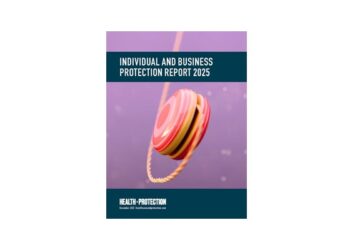Introducing simple protection policies, group risk auto-enrolment and microinsurance products would help reduce lower-income customers’ exclusion from insurance, the Institute and Faculty of Actuaries (IFoA) has said.
The panel of lower-income people noted they often suffered from complex or opaque policies, extra charges for paying monthly, loyalty penalties or simply the sheer cost of products acting as barriers.
The findings were published as part of The hidden risks of being poor: the poverty premium in insurance report by the IFoA and Fair By Design which found there was a significant extra cost preventing lower-income people buying insurance.
As part of the research, charity Toynbee Hall facilitated a workshop with a panel of experts by lived experience of poverty, discussing their experiences and perceptions of a range of insurances, including life and income protection products.
While some members had successfully bought and claimed on insurance, understanding the benefits, others had been restricted in their ability to do so.
As a result of this panel’s discussion, the IFoA highlighted several developments which could increase availability and accessibility. They included:
Clear and simple products
Simplicity, including communication about what is covered and the products themselves was seen as an important characteristic. The idea of a basic, simple insurance product which covered the necessities was popular.
For example, a simple life insurance product which would pay out a clearly defined sum on the death of the policyholder in exchange for a transparent monthly premium.
This was recommended by the Sergeant Review of Simple Financial products in 2013 but was not adopted by the industry, although some providers are offering cut down cheaper products, such as shorter-term income protection (IP).
The IFoA said it was time for the government to revisit “how it can support or incentivise” simple insurance products, as well as “increasing affordability of insurance for those who need it most”.
It added that simplicity was likely to help improve consumer trust and engagement with the sector.
Auto-enrolment into life and IP schemes
Ease of access was seen as a key factor and employers were seen by panellists as a suitable provider or vehicle for insurance.
The IFoA said this view was shared by other stakeholders and several considered auto-enrolment into group IP or life insurance through an employer to be a sensible approach.
It noted the success of auto-enrolment in pension saving suggests the introduction by the government of a similar model for insurance might also be popular and successful.
“This model may be suitable in providing employees with a basic level of income protection or life insurance that acts as a safety net and, due to the scale of provision, provided at a much more affordable rate,” it said.
“The ability to continue with this product when changing employers would be critical to its success. “For those not in employment and the self-employed, another government-agreed scheme would need to be created.”
Microinsurance
The IFoA argued that government should consider how it can employ microinsurance to provide low-income consumers with protection against the risks they most commonly face and consider it alongside other social safety nets.
Microinsurance products are tailored for protection against specific risks, such as illness, injury or death, and loss of lower-valued assets or possessions but because the coverage amount is considerably lower than typical insurance plans, consumers pay much smaller premiums.
Although more commonly considered as a solution in developing countries, several stakeholders considered microinsurance to have the potential to play a crucial role in providing protection to low-income consumers in the UK, the IFoA said.
Many low-income consumers and their advocates said the insurance market was not working well for them which meant uptake of insurance remained low.
Four recommendations for government
Overall, the IFoA also made four key recommendations for government and others:
- The government determines a minimum level of protection needed by all, including low income families, in order for them to remain financially resilient to specific risks and unexpected shocks.
- The Financial Conduct Authority (FCA) should undertake a study into the regulatory outcomes the market is currently delivering for low-income consumers. This study should also consider the interaction between the Equality Act and insurance pricing.
- The government should look at its role in facilitating the delivery of a minimum level of protection through the use of social policy interventions, such as extending the Flood Re model of insurance for different insurance product lines, to cover low income and vulnerable consumers who are priced out, or excluded from the market.
- The government should work with the FCA and industry to determine what changes are needed within the public policy and regulatory environment to support and incentivise the insurance sector to develop and deliver innovative solutions to address the poverty premium.
“Insurance provides households with protection against financial hardship in the face of income shocks such as unemployment, illness, and bereavement,” the IFoA said.
“However, as a result of the poverty premium in insurance, vulnerable and low-income consumers often cannot afford or are altogether excluded from, insurance that would provide protection from such shocks.”






